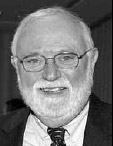
May 29, 2014
By Ed Forry
The Old Town Teams were at it again in late May in Atlanta and in Boston, renewing a baseball matchup with historic roots that were planted in our city early in the last century.
It was the National league versus the American, the Braves versus the Red Sox, two squads that for decades beginning at the turn of the 19th century had been the source of strong feelings and great rivalries among passionate followers throughout New England. That’s right: Before there was the storied Red Sox/Yankee rivalry, there was intense competition for Boston baseball fans between our city’s two major league squads, the Boston Red Sox and the Boston Braves.
The clashes lasted until 1953, when a financially strapped Braves owner Lou Perini moved his franchise out of our city and on to Milwaukee. For thousands of baseball fans in Boston, it was a sad time, the day when our favorite team gave up the ghost and left us behind.
Last month, the two teams resumed the rivalry in a home-and-home series, two in the vagabond Braves current home, and two here at Fenway Park. But the first glimpse of that Braves logo – the left-facing Indian and the hatchet, the same symbols that “our” Braves were wearing before they abruptly left town – evoked instant memories for old and wizened Braves fan.
Back then, you rooted for one team over the other: you were a Braves fan or a Red Sox fan. The Comm Ave trolley dropped you off at Kenmore Square for Sox games; a mile or so up the street, Braves Field was just off the avenue on Babcock Street. It has been redeveloped and is now Nickerson Field, home park for Boston University.
Sox followers in those long-ago days had their favorites – Ted Williams, Dom DiMaggio, Junior Stephens, Walt Dropo, and Billy Goodman. But in 1952, our Braves featured the future Hall of Famer Eddie Mathews at third, Johnny Logan at short, and Earl Torgeson at first base. The Sox had Sammy White behind the plate, the Braves had Walker Cooper; and on the Fenway mound were names like Ike Delock, Mel Parnell. Mickey McDermott, and Ellis Kinder, while Braves Field featured Vern Bickford, Lew Burdette, Dick Donovan and the great Warren Spahn.
In my neighborhood we favored the Braves. There were all sorts of stories about how they were “the poor man’s team,” the come-from-behind “miracle” World Series team of 1914 that almost won it again in 1948 against the Cleveland Indians.
That year, the Braves boasted two ace pitchers – the great lefty Spahn and Johnny Sain, who together won 39 games. “Spahn and Sain, then two days of rain,” the fans would say. It was also the year when it seemed there might be an all-Boston World Series, the Braves versus the Sox. But the Sox lost a one-game playoff to the Indians, who went on to beat the Braves in six.
Unhappily, 1948 turned out to be the Braves’ watershed season; four mediocre years followed. After his team finished the 1952 season with 89 losses
and a .418 winning percentage while attracting just 281,278 paying fans to Braves Field, Perini pulled the plug and decamped for Wisconsin, opening the season on April 14, 1953, as the “Milwaukee Braves.”
In every old Boston Braves fan, there remains a bit of fealty for our once-favorite team. Eddie Mathews (512 home runs) and Warren Spahn (363 wins, the best so far for a southpaw) went on to Hall of Fame careers, but, alas, we never got to see the great Hank Aaron (755 home runs) play at Braves Field, as he came up to the Braves from the minors on April 13, 1954, a year after the team left Boston.
This four-game series in late May, full of nostalgia, brought back happy memories of when we were young and baseball was truly special in Boston.

